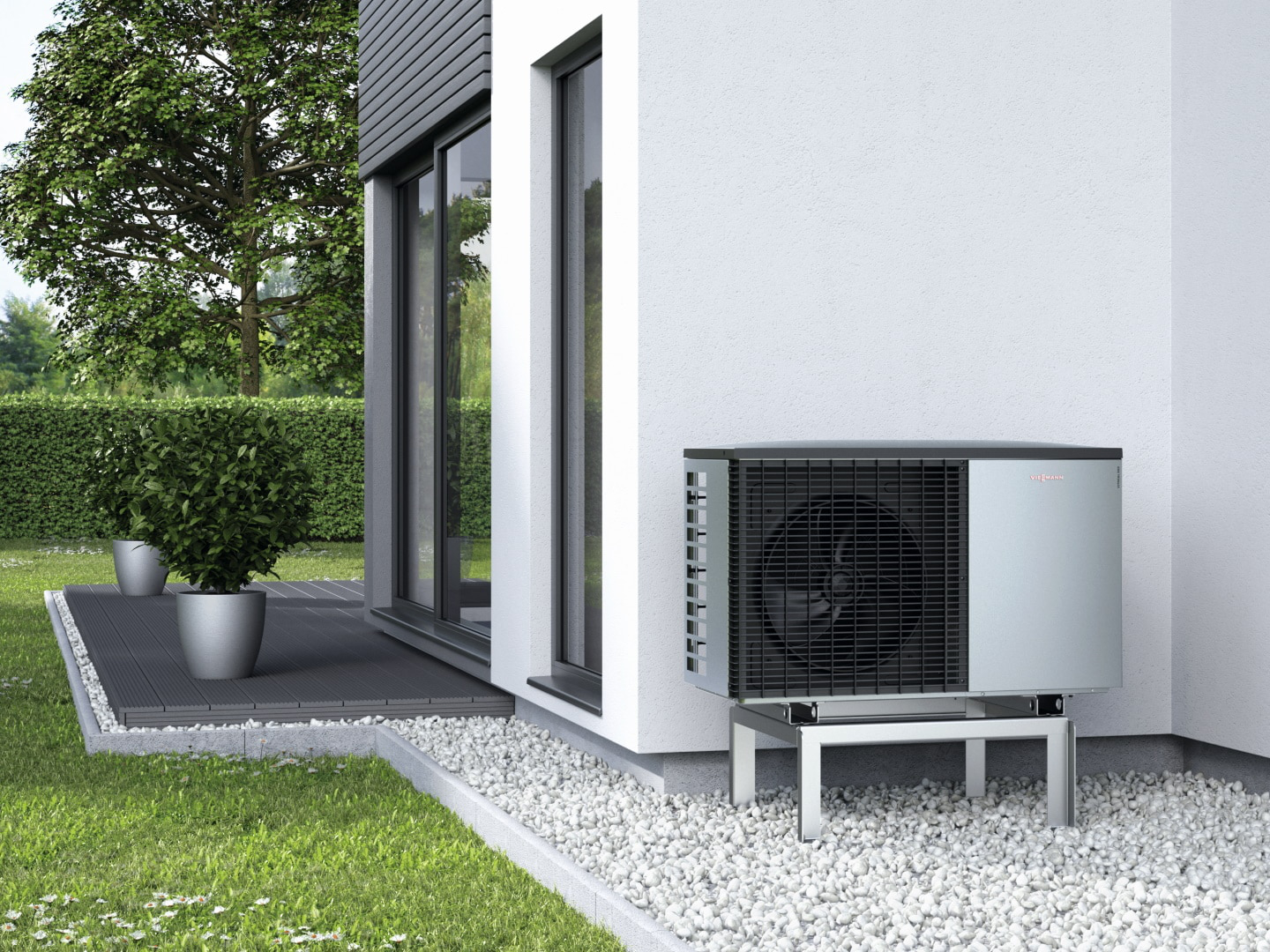
Image Credit: Viessmann
Boiler Upgrade Scheme increases heat pump grants to £7,500
As of 23 October, UK households can apply for a grant of £7,500 to install a heat pump. This is 50% higher than the previous grant amount of £5,000 for an air source heat pump.
According to energy supplier EDF, the cost of an air source heat pump varies between £3,500 to £8,900, inclusive of any government grant. It’s dependent on factors like how powerful the unit is, the brand and installation costs.
The government has also increased grants for ground source heat pumps from £6,000 to £7,500. Biomass boiler grants remain the same at £5,000.
The Boiler Upgrade Scheme is part of the UK government’s Net Zero plans. The £7,500 towards the cost of a new air source heat pump is one of the most generous schemes in Europe, according to the government.
The typical cost of buying and installing a gas boiler is between £2,500 and £3,000. Starting prices for heat pumps are below this for some households taking advantage of the grant and additional discounts offered by energy suppliers.
To qualify for a grant, you must own the property you’re applying for, whether it’s a business, second home, or a property you rent out to tenants. You must also have installed, or plan to install, your new heating system on or after 1 April 2022. And you must be replacing fossil fuel heating systems, like oil, gas or electric.
If you meet these criteria, you don’t have to make the application yourself. Contact suitable MCS certified installers to get quotes for the work. They will confirm you’re eligible. Once you’ve agreed a quote with your chosen installer, they will apply on your behalf on the Ofgem website.
Ofgem will then contact you to confirm you would like to proceed. The grant will be taken off the amount you pay.
Switching to a heat pump is a cleaner alternative to traditional gas boilers. However, the hefty price puts off many households.
The grants are available until 2028, giving plenty of time to take advantage of the opportunity.
“No one should have to choose between cutting costs and cutting emissions – our pragmatic approach means we can continue to deliver on our ambitious net zero targets without unfairly hitting the pockets of hardworking families,” said Energy Security Secretary Claire Coutinho.
“This will help thousands of people across the country reduce their energy use and keep their homes warm.”




